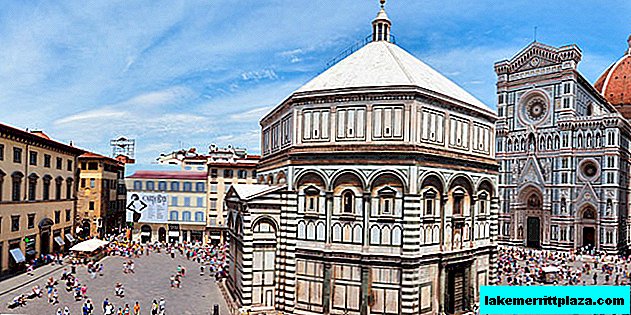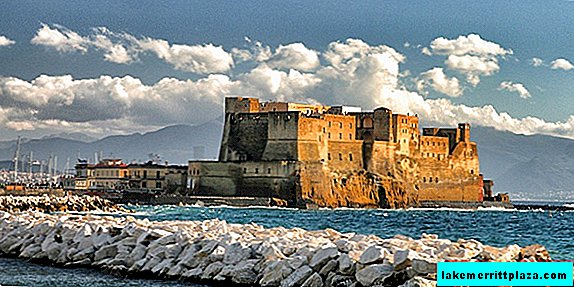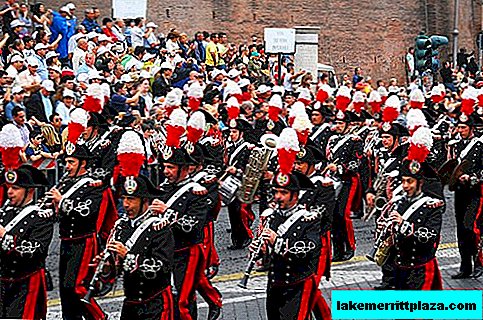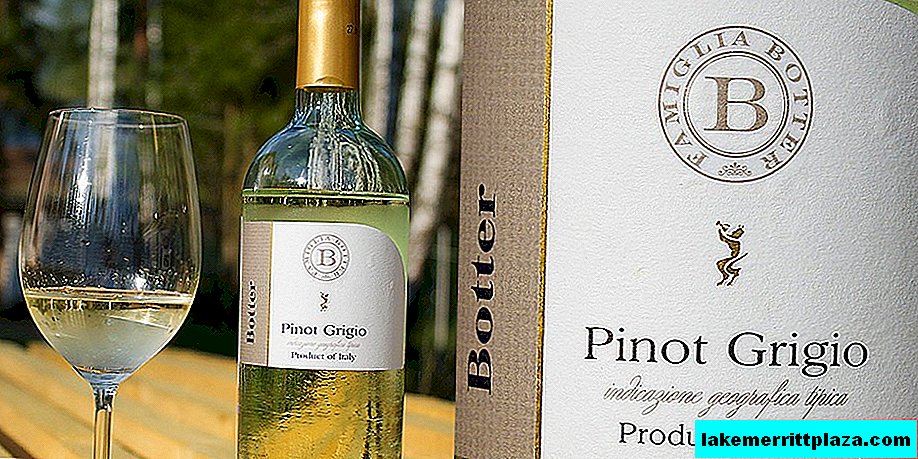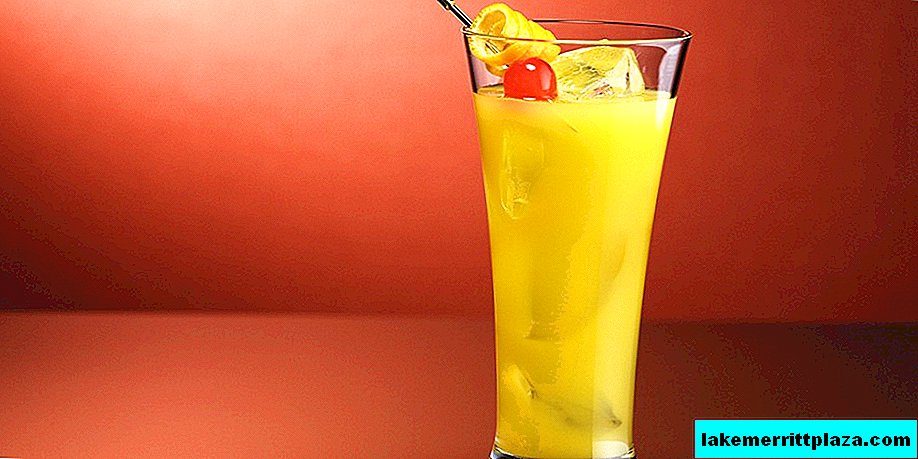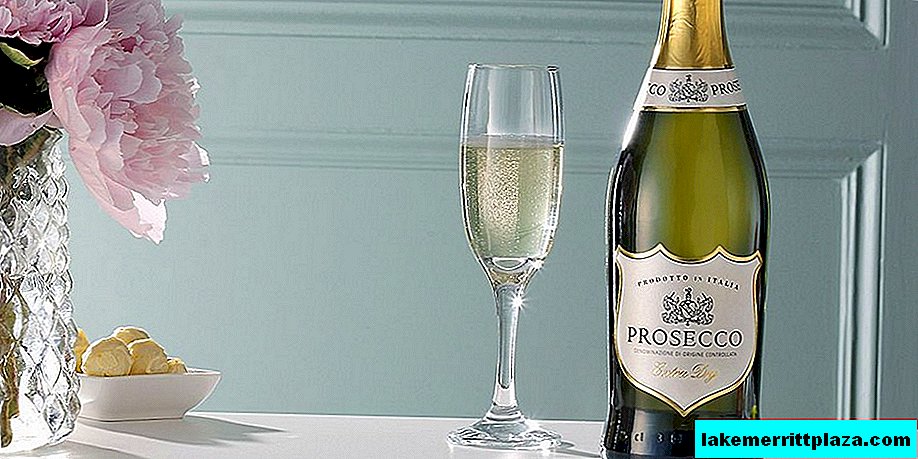Goslar is a provincial German town away from highways and fast-paced modern life. Outside of Germany, few people know that it exists, and even by the Germans it is by no means audible. The city is small, but the concentration of treasures of world culture and history will give odds to many!

Goslar, photo by Fotoamateur62
The second largest land in Germany, Lower Saxony, stretches from the North Sea to the Harz Mountains. At the foot of the Harz Mountains there is a small and compact, very cozy town of Goslar, which retained the charm of provincial beauty, but without the admixture of burgher emasculation. Fortunately, the city was not damaged during the war. Now anyone can walk along the streets that have not changed much in recent years, so 600-700 ...
The old town of Goslar and the former mines of the Rammelsberg mine were included in the UNESCO World Heritage List in 1992.
City `s history
For the first time Goslar is mentioned in the annals of 922. It was then that Henry I founded a settlement near Mount Rammelsberg. Mining became the main occupation of the inhabitants, and Goslar became the center for the extraction of coal, silver, lead and copper. Today, a museum opened at the former mines of Rammelsberg tells about this period.
Goslar will turn into a prosperous city. Under the Holy Roman Emperor Henry II, a royal palace (palatinate) was built here. The city becomes a significant Christian center of Saxony, it was even called Northern Rome. In the 11th century, 47 churches and chapels were erected. Perhaps the temples were needed by the locals to protect themselves from witches and all evil spirits, which, according to legend, were gathered nearby, on Mount Brocken, to their covens on Walpurgis Night.
During the reign of Henry III and his wife Agnes, the heyday of the city began. The palatinate and the church of St. Simon and St. Jude were completed.
The city was part of the Hanseatic Trade Union and occupied an important place in it.
Urban legend
Once Emperor Otto I the Great sent Knight Ramm to the Harz Mountains for game. The hunter had to leave the horse below, since the climb was steep, and the thickets were impassable. When he returned, Ramm was surprised to see that the horse was impatiently beating his hoof, and silver pieces of metal appeared from under the ground. The knight showed the find to the emperor. In gratitude, Otton I ordered that the mountain be named in honor of the faithful knight Ramm - Rammelsberg, and the mining community was named after his wife Goza - Goslar.

Former Treasury Building, photo by François George
From the meeting of Emperor Otto I with the knight Ramm on horseback, the performance begins on the pediment of the building of the former Treasury Kaiserringhaus (Kaiserringhaus) on the Market Square (Marktplatz). Four times a day (9:00, 12:00, 15:00 and 18:00) three small doors open and figures of the king, knight, horse and miners come out to ring the bell, illustrating the story of the Rammelsberg mine. Carillon was presented to the city in 1968 by Preussag for the 1000th anniversary of this event.
The city's attractions
 Fountain with an eagle
Fountain with an eagle
 Kaiserinhaus
Kaiserinhaus
 House Wort
House Wort
 Town Hall
Town Hall
 Marktkirche
Marktkirche
 Church of St. James
Church of St. James
 Church of Saints Simon and Judah
Church of Saints Simon and Judah
 Siemens House
Siemens House
 Rammelsberg mine
Rammelsberg mine
 Tin Figures Museum
Tin Figures Museum
Palatinate
In the Middle Ages, the Holy Roman Empire did not have a capital, so the German rulers were constantly on the move, moving from one residence to another. Residences were called the Palatinate (Pfalz). And those of them, where the emperor visited more often, were equipped richer than the rest.

Royal Residence (Kaiserpfalz Goslar), photo
In 1017, Emperor Henry II, for political reasons, moved his residence to Goslar, closer to the rich silver deposit. And his successors, Conrad II and Henry III, completed the creation of a magnificent ensemble of the imperial palace (Kaiserpfalz Goslar), which to this day is striking in its beauty.

Kaiserhouse, photo by User: Brunswyk
The palace complex included: the two-story imperial palace Kaiserhaus (the lower hall with the chapel of St. Ulrich connected the arcade passage), the collegiate church of St. Simon and St. Jude (only the northern portico was preserved), the Church of the Virgin (not preserved). Stables, warehouses, work and living quarters, a garden adjoined the palace. The whole complex was surrounded by a fortress wall.
In some mysterious way, the Palatinate attracted all kinds of misfortunes: a fire in the emperor's house in 1065; a lightning bolt to the imperial bedroom in 1107; collapsed parts of the building in 1132 and another fire in 1289. The Palatinate was restored, but other royal residences were ahead of him and became more significant. The time of desolation has come.
In 1865, part of the residence collapsed. Kaiser Wilhelm I ordered the restoration of the complex. Reconstruction continued from 1873 to 1879. Then the main hall was painted with paintings by Herman Wieslicenus on historical subjects.
Today, the imperial palatinate is an example of Romanesque architecture in Goslar. Among the Palatinate of Germany, it is best preserved.
Market Square and Fountain

Market Square with fountain, photo S-F
The Market Square (Marktplatz) is decorated with the famous fountain (Brunnen des Marktplatzes), crowned with a golden eagle (symbol of the city). This is the central point of the city. The fountain is an integral work of art, although it consists of parts made at different times - from the 12th to the 18th centuries.
House Wort

House Wort (Kaiserworth), photo François George
A striking landmark of the city is the Kaiserworth House on Market Square. Once it was the property of the guild of long-distance traders and tailors. The house was built in 1494 on the site of an older building. Today it is the Novum Hotel Kaiserworth.
Town Hall

Town Hall, photo by j tenner

Conference hall
The building of the City Hall was built in 1450. An interesting meeting room (Huldigungszal - Huldigungssaal), executed in 1505-1520. Walls, ceiling and even window niches with a room of 7.30 x 7.30 x 3 m; an unknown artist laid out panels with scenes from the life of Jesus and the apostles, scenes from urban life, portraits of 11 emperors of the Holy Roman Empire.
Half-timbered houses

Peerlessly beautiful half-timbered houses, photo by barnyz

Old frame houses look modest, but not in Goslar, photo David Short

The streets and alleys of the Old Town are amazing, photo by Mathias Liebing
In total, the historical center of Goslar has more than 1,500 buildings of the 15th-19th centuries, each of which has its own history. Narrow streets and old houses with carvings and colorful paintings, mezzanines and balconies - everything pleases the eye and creates an amazing atmosphere.

City roofs, photo by Dietmar Schwanitz

Roof of the house, photo RiesenFotos
The houses of the city, which are not one hundred years old, look great - people still live in them today. Roofs in the city are mostly black and gray. They are covered with plates of local slate.
Marktkirche

Market Church, photo by juemro
From the Market Square you can see the tall different towers of the Church of Saints Cosmas and Damian (Marktkirche St. Cosmas und Damian). It was first mentioned in 1151. But its ancient part supposedly dates back to the 11th century. There are preserved medieval windows with stained glass windows, an old library, a bronze font in 1573, a wooden altar in 1659, and a carved chair. The towers of this church are visible from everywhere and are a good landmark. From the north tower of the church you can see the whole panorama of the city.
Church of St. James

Church of St. Jacob (Jakobikirche), photo zug55
The two-spire church of St. Jacob (St. Jakobus der Ältere) is the second oldest church in the city, which was first mentioned in 1073. The church was repeatedly updated and rebuilt. In the XIX century it was disassembled, only the porch remained. Only the massive towers survived from the original construction. During the secularization of Napoleonic times, Jakobikirche was closed. The building was returned to believers in 1802.
Church of Saints Simon and Judah

Goslar Cathedral (Goslarer Dom), photo zug55
The Church of Saints Simon and Judas (Stiftskirche St. Simon und Judas), or Goslarer Cathedral (Goslarer Dom), was erected almost simultaneously with the Imperial Palace in 1040-1050 in the Romanesque style. By the beginning of the XIX century, the religious building was almost destroyed, and in 1820 it was demolished. Only part of the narthex has survived to our time, and from the church relics - the Imperial throne (Kaiserstuhl Goslar) and the altar of Krodo (Krodoaltar). Behind glass Gothic windows early medieval architecture is visible.
Siemens House

Siemens House, photo by ohaoha
Siemens House (Siemenshaus) - a beautiful fachwerk house, decorated with carvings, the family nest of famous German industrialists. It was built in 1692-1693. He performed several functions: home, warehouse, store and brewery. An inscription is carved near the front door: “Pray and work.” The house did not belong to the family from 1778 to 1916. Today the Simens again own it. Here is the family archive, meetings and meetings are held.
Tin Figures Museum

Pewter Museum (Zinnfigurenmuseum in der Lohmühle)
The museum is located in the building of the Lomule mill (Zinnfigurenmuseum in der Lohmühle), which is already 500 years old. The exposition has several dozens of diars about the history of Goslar, the German emperors, the Thirty Years War and the life of the townspeople. Visitors can cast and paint the tin figurine themselves at an additional cost.
City gate

Wide gates of the city, photo Teelicht
The wide gates are well preserved from the old city walls.
Mines Rammelsberg

Rammelsberg Ancient Mine, photo by Markus Schweiß
The Rammelsberg mine (Bergwerk Rammelsberg) already existed in the 10th century. The name comes from the name of the knight Ramm from the retinue of Emperor Otto I. It was the mine that the medieval city owed its wealth. Silver, lead, copper and zinc were mined here. Ore mining ceased in 1988. Now there is a mining museum on the site of the mine. Tourists are shown the oldest adit (XII century), the Maltermeisterturm tower, the dump (X century), medieval lifting mechanisms and tools, there are interactive exhibits. The mines of Rammelsberg are protected by UNESCO.
In the vicinity of Goslar, silver and lead, copper and sulfur are still mined, fertilizers and paints are produced, and cigars are made. But in the city itself and nearby there are no industrial enterprises. Goslar is environmentally friendly.

River in the city, photo by Y.Shishido
A small river flows from the mountains into the canal. It’s good to sit in an outdoor cafe near the canal, try unique huge custard cakes and admire the geraniums on the windows.
When Goslar flourished in the Middle Ages, it was said that everything that touched the state gentleman would turn into gold. Therefore, the funny figure of a pooping boy on one of the houses poops ... with gold coins.
The city is also interested in strange monuments. For example, the sculpture "The Nail Hat", installed in 1981, or the "Goslar Warrior" by Henry Moore, donated by the sculptor to the city in 1975.


